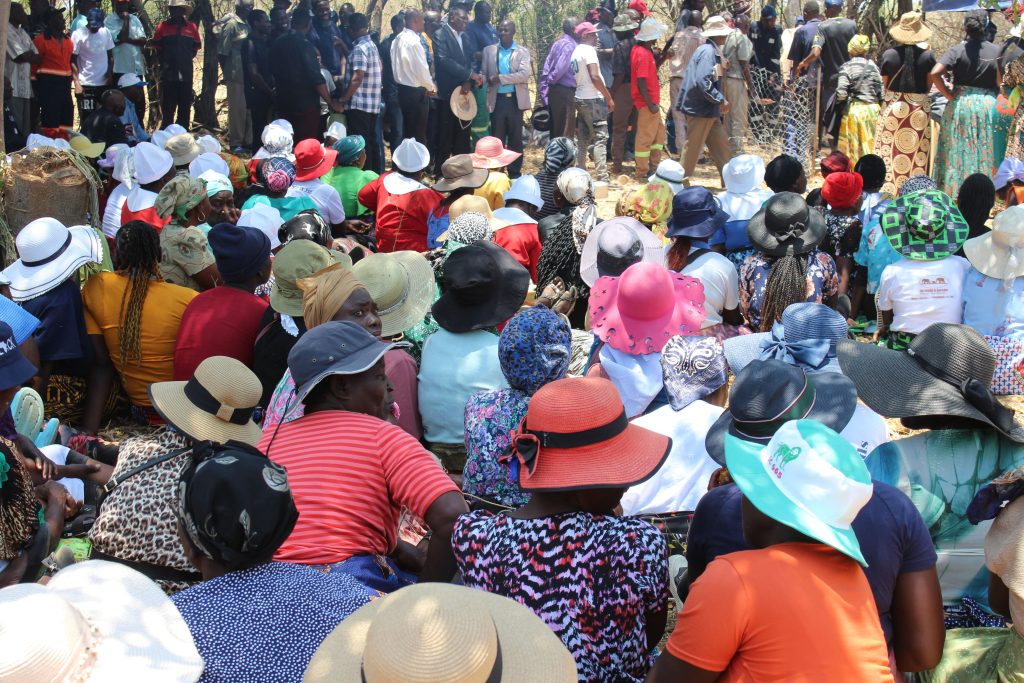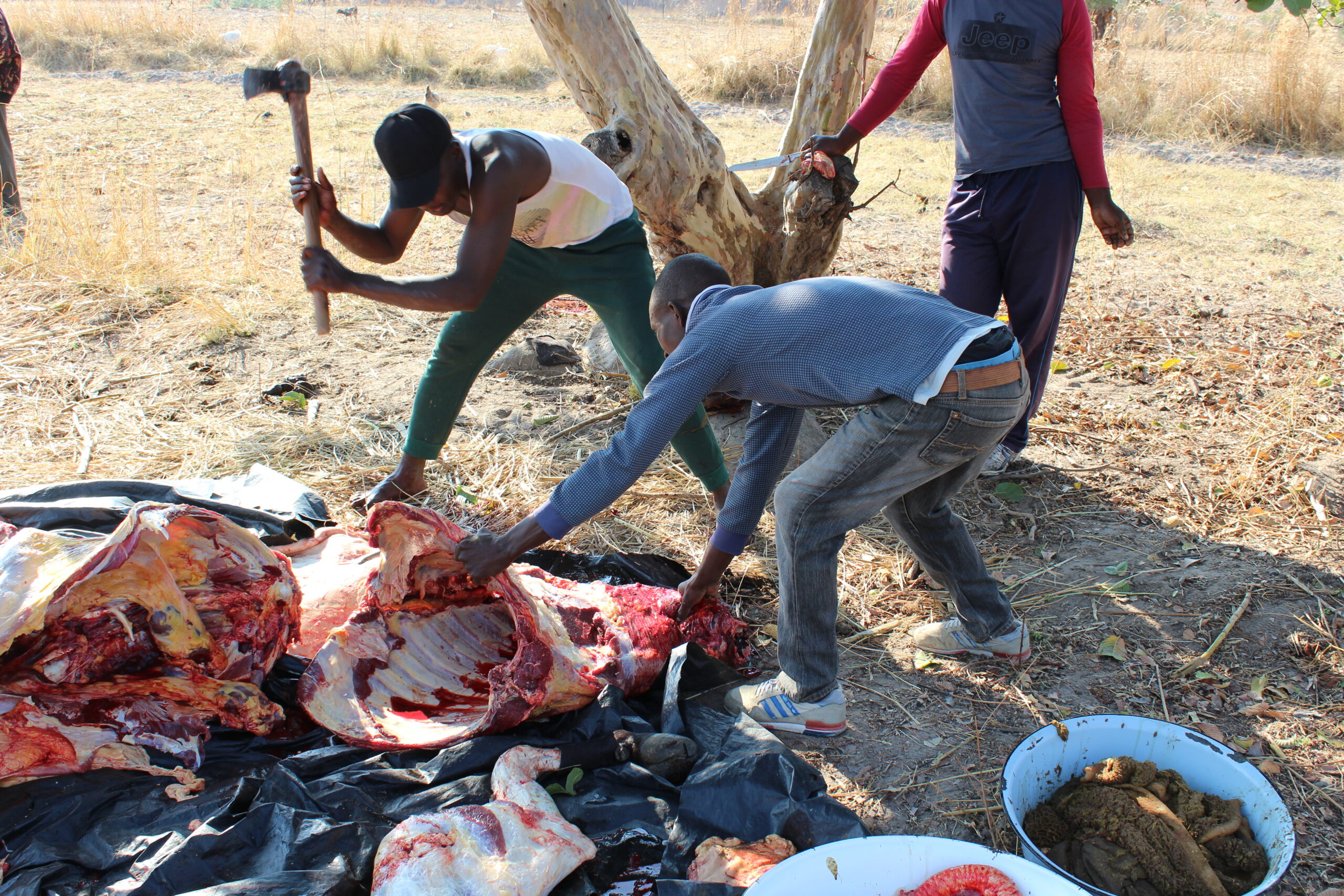I recently attended the burial of a grandmother of mine – may her soul find eternal rest. As I observed the goings-on at the funeral, one thing stood out very clearly to me: people in rural communities still observe traditional practices more deeply and more consistently than those in urban areas. The rhythm, the order, the roles people assume, and the unspoken rules of what must happen and when—it all unfolded naturally, almost instinctively.

Perhaps this difference is shaped by the way communities are organised. In a musha (village), most people are connected through kinship. You are not just living next to neighbours; you are living among cousins, aunties, siblings, and in-laws, with relationships stretching backward through generations. Most rural communities are also made up of older people who grew up deeply embedded in cultural practices. And because many of them do not have corporate job schedules or city-based demands, they are able to fully commit to what needs to be done in the burial process, often over a few days.
The picture in the featured image of this post—varoora balancing clay pots of water on their heads—is one of many practices observed at Shona burials. I took that photo at the funeral. That moment carried with it the weight of tradition, pride, and responsibility. It reminded me that funerals are not just about mourning; they are also about identity, memory, and continuity.
In a previous post, we explored five pre-burial customs of the Shona, including the folding of the corpse and the tying of strips of bast fibre. Here, we continue with another five customs, revealing more of the cultural depth that surrounds death and burial among the Shona.
1. Chema – Tokens of sympathy
When mourners arrive at a funeral, they do not come empty-handed. They bring chema—tokens of sympathy—such as mealie meal, sugar, firewood, money, or even livestock, depending on one’s capacity. The purpose is both symbolic and practical. Symbolically, it acknowledges the family’s loss and expresses solidarity. Practically, it helps feed the many people who gather over the funeral period.
In some families, a person is appointed to record and collect chema so that those contributions can be remembered and reciprocated in future. Funerals are communal events, and chema ensures no family is left to shoulder the burden alone.
2. Nhevedzo – A Beast for mourners
Nhevedzo is the name used to refer to a beast that is killed to feed mourners during the funeral of an adult who had a family.
The beast is given by the eldest son of a man who has died, or by the spouse of the deceased, or by the deceased’s sons in-law. Generally though, any of the deceased’s children can give this beast. If a son in-law with musaridzwa (outstanding bride-price payment) provides the nhevedzo beast, this will reduce the musaridzwa.

Before the beast is slaughtered, it is offered to the deceased so that they know that this is the beast that will be killed in their honour. Some of the meat is fire-roasted especially for the gravediggers. The meat which is sent to those at the grave is supposed to be eaten without seasoning.
3. Rukarwa – Site of grave
Rukarwa is the mark made to show where a grave should be positioned. Marking the position, known as kutema rukarwa, is done symbolically before the grave-digging can begin.
After the family elders have chosen the place where the grave will be dug, the first mark of the grave is made by the chosen family member using a hoe or pick. Normally, the elected person could be the son, father, or brother of the deceased person. A few words of presenting the chosen place for the grave may be uttered just before, or as the person strikes the ground with the hoe. One may say, ‘This is the place that we have chosen for your home.’
This act is more than practical; it is relational. It formally offers the deceased a place of rest and acknowledges the continuing connection between the living and the ancestors.
In modern cemeteries where graves are bought and pre-marked, kutema rukarwa is often omitted.
Kutema rukarwa can be likened to a custom of the Shona involving the presentation of a piece of land to build a house, which is done by a father to his son. The father drives a peg in the soil on the spot the house is to be built, as a sign that he has given the son permission to construct the house, and also to invite the ancestors to bless the place.
4. Kuchera guva – Digging the grave
Among most Shona groups, graves are dug early on the morning of the burial, not before. The work is done by men, often relatives or neighbours. As they dig, food and traditional beer (doro) are provided—not as payment, but as recognition of effort and communal duty.

If digging finishes early, the grave is not left unattended. At least two men remain to guard it. Historically, if burial was delayed, the grave was guarded overnight. This is because the grave is considered vulnerable to tampering—especially by witches (varoyi)—so it must be protected.
A grave is not merely a hole in the ground. It is sacred space, a threshold between worlds.
5. Hweda – Burial pocket
According to Shona burial customs, the graves of adults are dug such that a pocket that fits the coffin (or body) is created. In the past, after digging vertically the pocket was created by deflecting to the side when they reached the bottom. Here the corpse would be laid on its right side with the arms and legs bent upwards.
Nowadays, this pocket is created by simply digging a narrower trench at the bottom of the grave and building a brick wall around it. This is done so that the body is shielded and not directly buried under the soil. This pocket is called hweda. Others call it tonera or mugwavava.
The hweda is then sealed off with large rocks or tree logs. Nowadays people sometimes use concrete slabs and zinc sheets as alternatives to rocks and logs.
After the elders, who next?
Attending my grandmother’s funeral reminded me of how Shona customs intertwine community, respect, ancestry, and spirituality. Rural communities continue to be the strongest custodians of these traditions. Their continuity depends on practice, participation, and presence—not only memory.
Yet I left with a quiet question lingering in my mind:
As the older generations are buried, and as we, the elders-in-waiting, now live in cities far from the villages… what will become of these customs? Will we carry them forward, adapt them, or slowly let them fade?

Perhaps new forms of tradition will emerge, shaped by new environments and new ways of living. Only time will tell what they will become, and who will keep them. But one thing feels almost certain: traces of the old ways will always remain.

